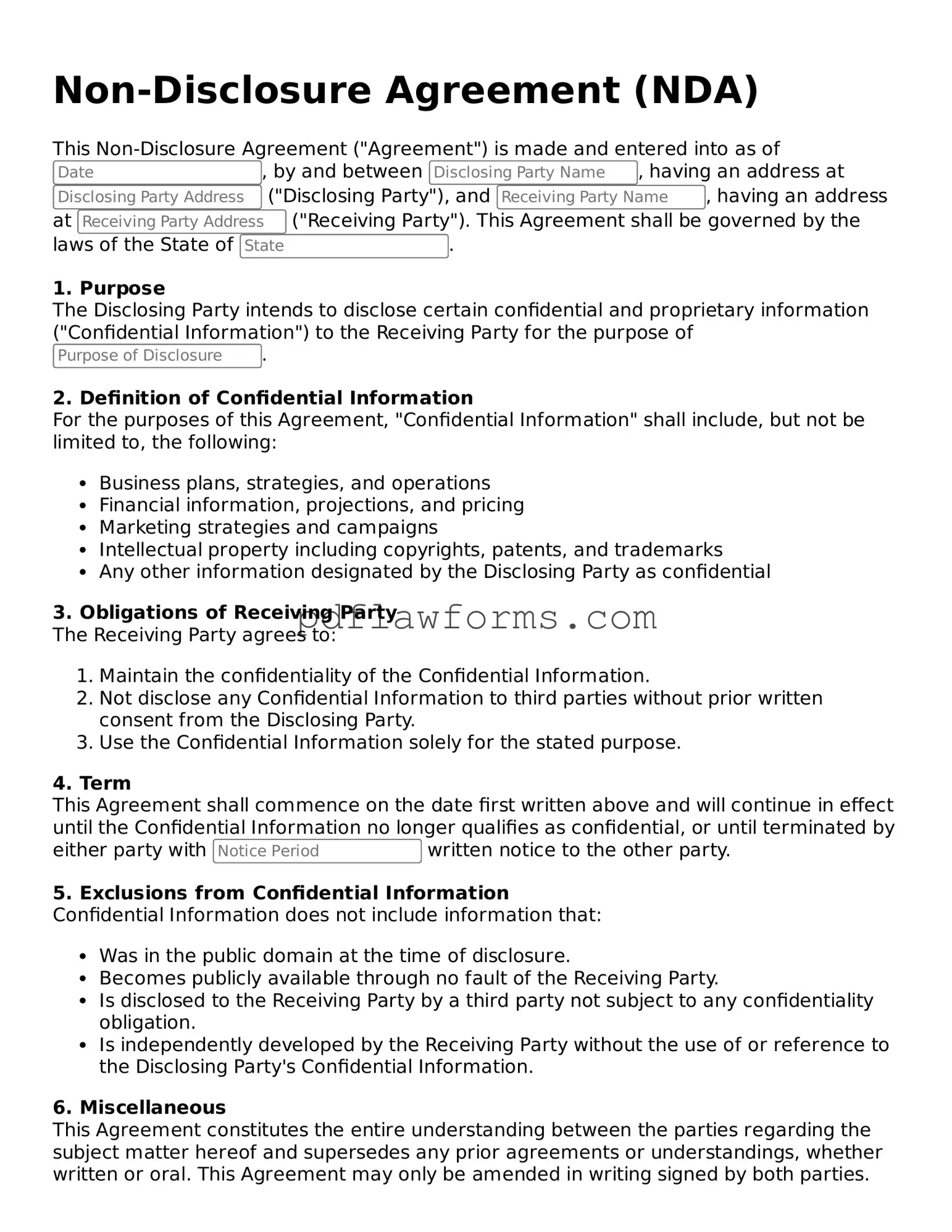When filling out a Non-disclosure Agreement (NDA) form, individuals often make several common mistakes that can lead to confusion or legal issues later on. One frequent error is failing to clearly define the parties involved. It is crucial to specify who is bound by the agreement. If the parties are not clearly identified, it may create ambiguity about who is responsible for maintaining confidentiality.
Another mistake is neglecting to specify the information that is considered confidential. The NDA should clearly outline what information is protected under the agreement. Without this clarity, parties may have different interpretations of what constitutes confidential information, leading to potential disputes.
Additionally, some individuals overlook the duration of the confidentiality obligation. It is important to state how long the information must remain confidential. If this duration is not included, it could result in misunderstandings about when the obligation to protect the information ends.
People also often forget to include any exceptions to confidentiality. There are typically certain situations where disclosure is permissible, such as when the information becomes public knowledge or is required by law. Omitting these exceptions can lead to unintended consequences.
Another common oversight is not considering the governing law. The NDA should specify which state’s laws will govern the agreement. This detail is important because it can affect how the agreement is interpreted and enforced.
Some individuals may fail to include the consequences of a breach. An NDA should outline what happens if one party fails to uphold their end of the agreement. This can include legal remedies or financial penalties, which help to deter potential violations.
In addition, many people do not have the agreement reviewed by a legal professional. While it may seem straightforward, having an attorney review the NDA can help identify potential issues and ensure that the agreement is enforceable.
Another mistake is signing the NDA without fully understanding its terms. It is vital for all parties to read and comprehend the agreement before signing. Failing to do so can lead to unintentional commitments and obligations.
Lastly, some individuals forget to date the agreement. A date is essential as it establishes when the NDA takes effect. Without a date, it may be unclear when the confidentiality obligations begin, which can complicate enforcement.
